This is one of a long-term series of posts about Ariadne’s Tribe style inclusive Minoan spirituality. All my posts about Tribe spiritual practice can be found here. Please feel free to ask questions and request subjects for future posts.
One of the most striking aspects of Minoan art and artifacts, to the modern eye, is the bared breasts of the female figures. The breast-framing clothing in the Minoan figurines and frescoes was considered quite racy in the early 20th century when these artifacts were first discovered. Even today, they cause a stir (and often, an amount of required pixelation on some social media platforms).
But to the Minoans, they weren’t pornographic. They were sacred.
The Minoan pantheon is headed by a trio of mother goddesses: Rhea, Therasia, and Posidaeja. We call them the Great Mothers. What better way to represent the way they care for their human children than by emphasizing the way human mothers nurture and nourish their own babies?
Breast and udder symbolism abounds in Minoan art. It takes many forms, not just the more obvious ones like the figurines above (faience Snake Goddess figurines from Knossos, ca 1700 BCE) and the fresco below (from the House of the Ladies in Akrotiri, ca 1625 BCE):
Breasts show up in interesting forms, like these rhytons (ritual libation pitchers) from Malia (on the left, 2200-1800 BCE) and Mochlos (on the right, 2300-2000 BCE):
Both of these vessels have openings in the back for filling, and then obviously the liquid would pour out the breasts. What a powerful image it would make, to pour a libation from one of these vessels during a ritual!
The Minoan mother goddesses also appear in animal form: Amalthea the goat-goddess, for instance, and Europa the cow-goddess. So as you might expect, in addition to human breast imagery, we find animal udder imagery throughout Minoan art. There are beautiful examples such as this pair of faience plaques from Knossos that show a cow and a goat suckling their young:
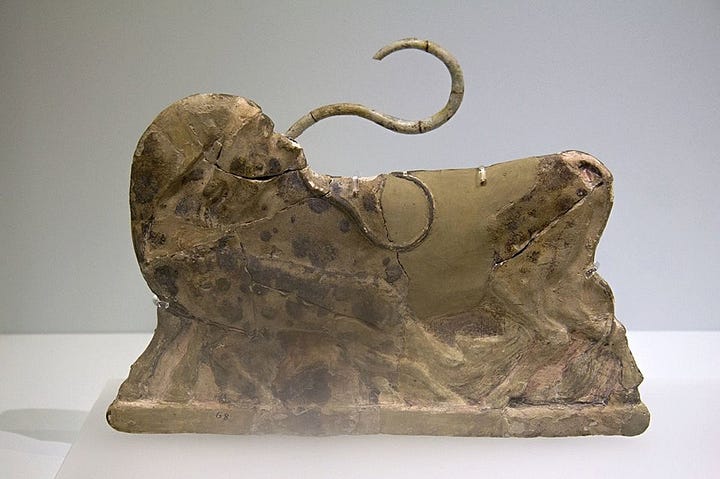
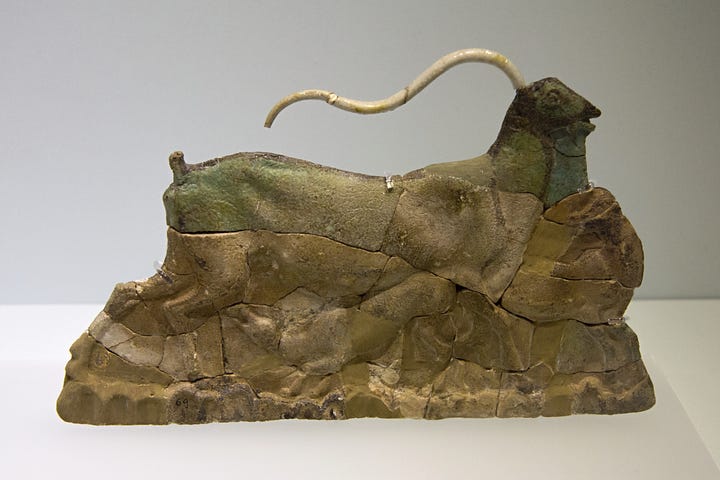
There are seal stones that show cows, goats, sheep, deer, and even pigs suckling their young. But how about something even more schematic? These vessels are called conical rhytons:
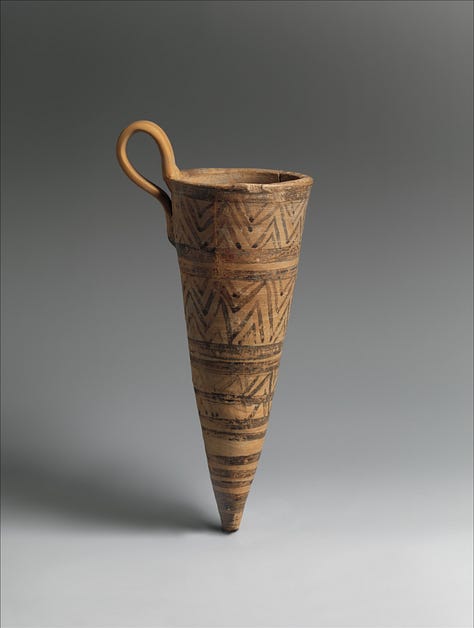


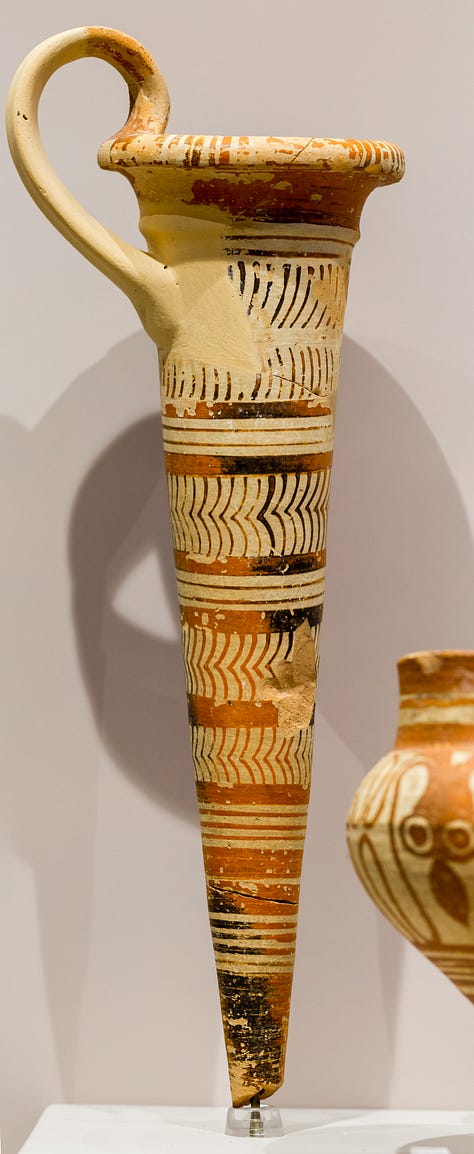
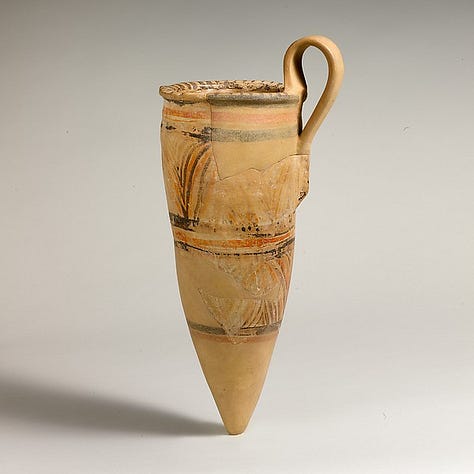
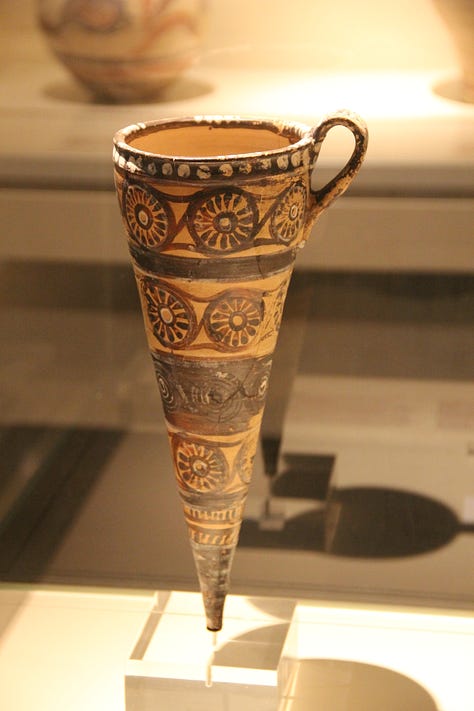
And no, it’s not your imagination that they’re shaped like animal teats. In fact, each vessel has a hole in the bottom tip through which the liquid poured during ritual libations (it would have been stoppered to fill the vessel).
Just as nourishment pours from a human mother’s breasts, blessings pour from the Great Mothers to their human children. And together we are joy!
I’m not going to paywall my Substack, but if my work has meaning and value for you, please consider dropping a little something in my tip jar at Ko-Fi. Thank you!
You can find my books here and my art here and here. I do apologize, but due to unpleasant activity from trolls, I’ve had to limit comments to subscribers only. I hope you understand.
About Laura Perry
I'm the founder and Temple Mom of Ariadne's Tribe, a worldwide inclusive Minoan spiritual tradition. I'm also an author, artist, and creator who works magic with words, paint, ink, music, textiles, and herbs. My spiritual practice includes spirit work and herbalism through the lens of lifelong animism. I write Pagan / polytheist / magical non-fiction and fiction across several different subjects and genres. My Minoan entry in the Moon Books Pantheons series is now available for pre-order and will be released on 26 August 2025. My book of modern Minoan myths is now available in paperback, with the ebook coming soon. I’m also an avid herb and vegetable gardener and living history demonstrator.


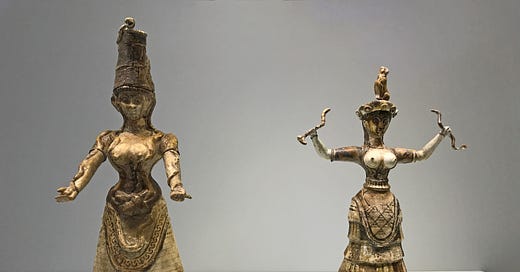



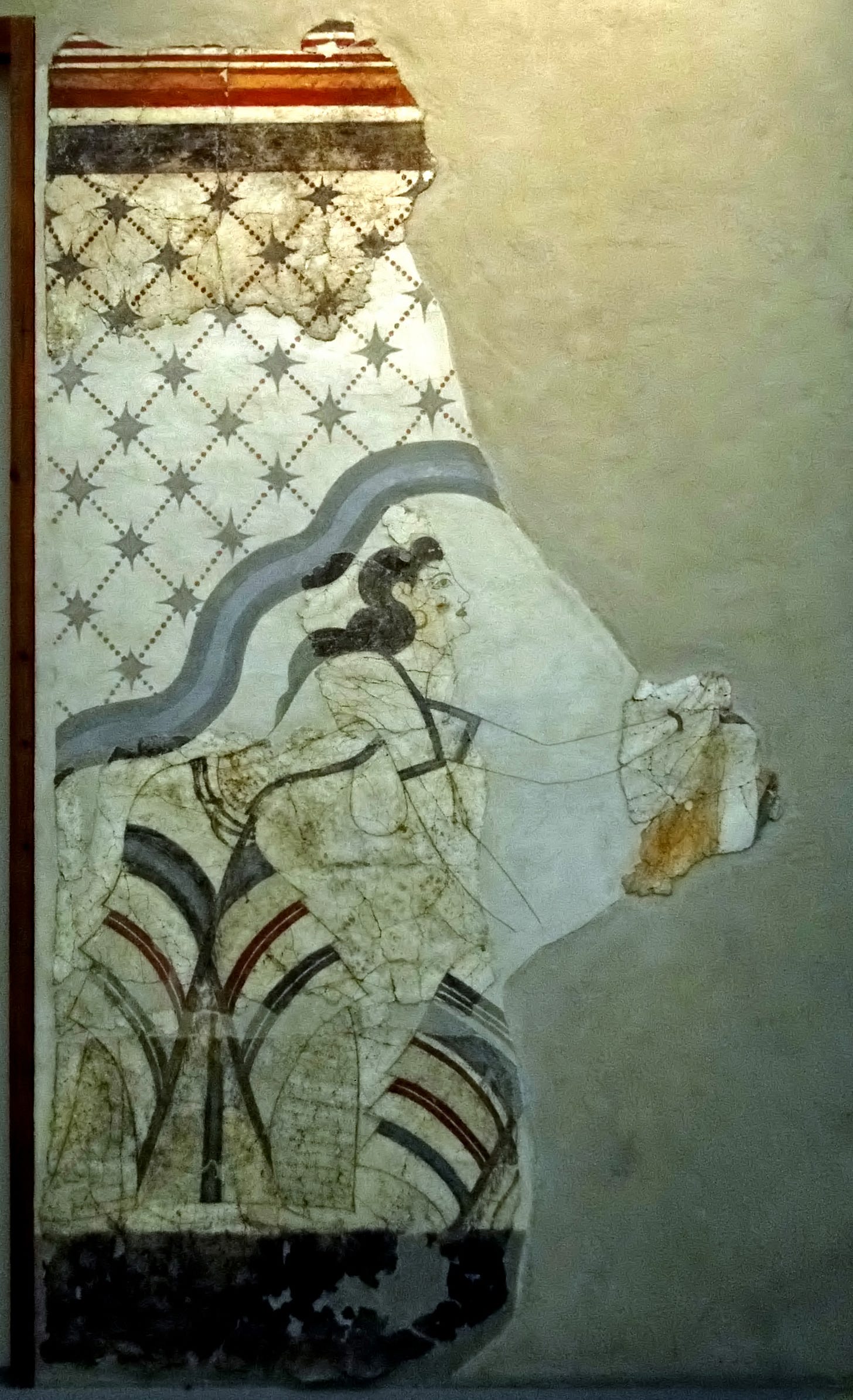
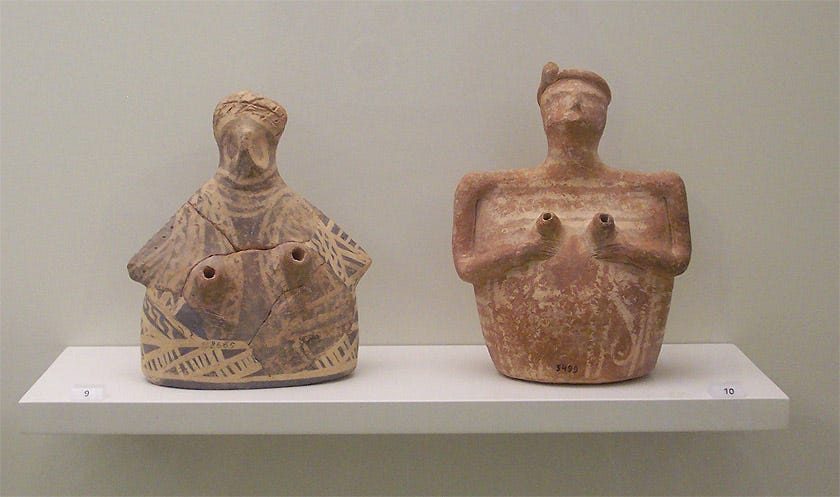

Thinking of the many-breasted Artemis of Ephesus as well. Thank Christianity for all the shame, the erasure of sacredness of women, etc. So much we have to reclaim that's been obliterated.
And yes here in Brittany we have a long tumulus near us with breasts carved on it from the prehistoric era. Accompanying them are what they describe as 'axes' - myself, I'd have said they were phallic rather than axey...